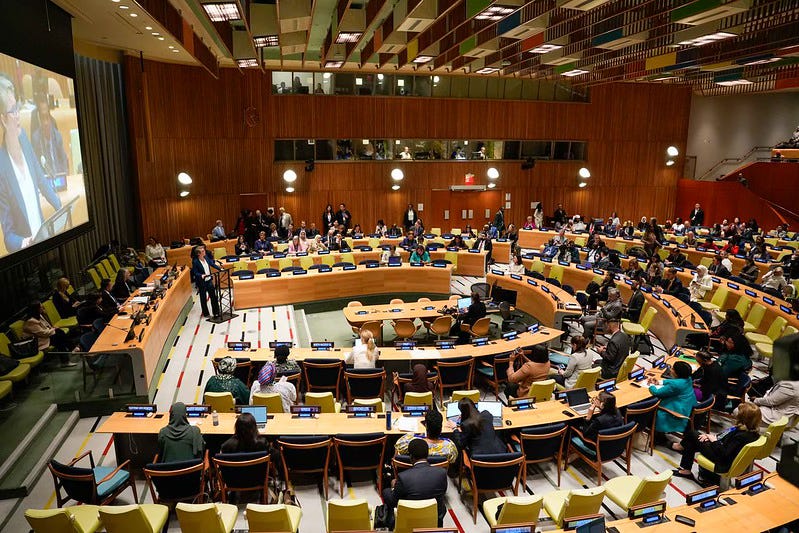Snapback Sanctions: The Final Nail in Iran Diplomacy
This week, sanctions were officially reimposed on Iran after the UN reactivated them using the “snapback” mechanism. The snapback drama has been a theater of the absurd.
This week, sanctions were officially reimposed on Iran after the UN reactivated them using the “snapback” mechanism. The snapback drama has been a theater of the absurd: just three months after being bombed by both the U.S. and Israel, Iran now receives the penalty of reimposed sanctions for halting compliance with a deal that the U.S. wholesale violated more than seven years ago. This won’t make a peaceful outcome of the nuclear crisis more likely, and does serious harm to diplomatic prospects in the near term.
The road to snapback has been paved by years of escalation: after the 2015 nuclear deal imposed unprecedented inspections on Iran, the Trump administration unilaterally withdrew in 2018 and launched a policy of “maximum pressure,” followed by his administration’s 2020 assassination of General Qassem Soleimani that brought the two countries to the brink of war. Efforts to revive the deal under Biden faltered in 2021-22; Biden’s administration kept sanctions in place and Iran expanded its program, while Israel intensified covert operations and direct strikes.
By June 2025, the U.S. and Israel bombed Iran directly, killing more than a thousand people (over half civilians) and illustrating how failures of U.S. foreign policy across multiple presidential administrations produce deadly results.
Now, rather than rebuilding diplomacy, Washington and Europe, by persuasion of Israel, have finalized snapback sanctions, burying the JCPOA era and setting the stage for war resurgence.
The European troika, who once served as intermediaries between the U.S. and Iran, instead adopted the role of maximum pressure acolytes. By following Washington’s lead, they expended their leverage to increase pressure on Tehran. A resolution of the nuclear crisis will no longer depend on Europe; other players, including Russia and China, may soon step into the void.
This was an imminently resolvable standoff, yet Washington and the E3 rejected offramps put forward by Tehran that could have restored basic transparency and de-escalated tensions. The end result is escalation, narrowing the political space for negotiation in Tehran and raising the risk of reigniting the June war.
The Trump administration must halt its inexorable path to a long war of choice in Iran. President Trump is begging to be recognized as a pro-peace innovator, but it seems increasingly unlikely he can even clean up the wreckage his own administration created. Blindly following Netanyahu into confrontation doesn’t make him a peacemaker– it makes him a sidekick in someone else’s war. The only way he can claim the mantle he craves is by reopening negotiations and steering U.S. policy away from escalation.
Lost in the back and forth of the political drama over snapback at the UN are the civilian consequences. These sanctions are not targeted at decisionmakers in Tehran, but are broad measures that have primarily punished ordinary Iranians. These measures choke off access to medicine, food, and financial stability, worsening inflation and driving millions deeper into poverty. History has shown that broad sanctions rarely bring about political change; instead, they devastate the most vulnerable while hardliners tighten their grip. For everyday Iranians, snapback means more economic despair, more isolation, and fewer prospects for a dignified life.
The finalization of snapback symbolizes the final nail in the coffin of the JCPOA era, one typified more by failure to follow through on its vision than on the failure of the negotiators themselves. Ultimately, the U.S. abandoned negotiation for coercion, increasingly relying on Netanyahu’s vision of military provocation and dictation instead of mutual compromise. The consequence isn’t security, but dead civilians, a collapsing Iranian middle class, and a narrowing path that leads in one direction only: back to war.


